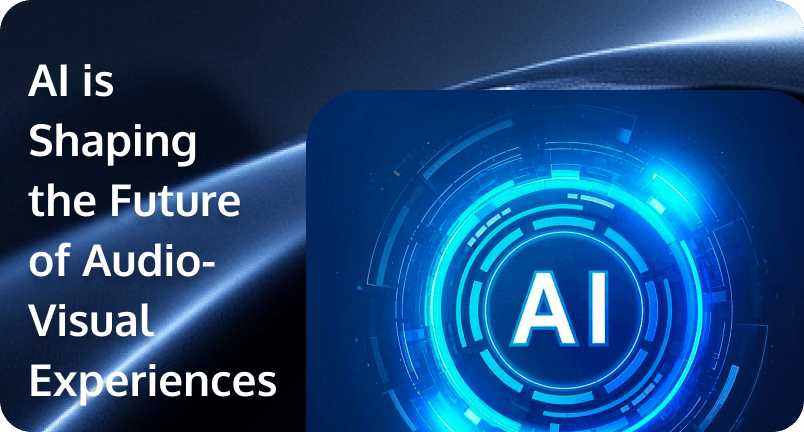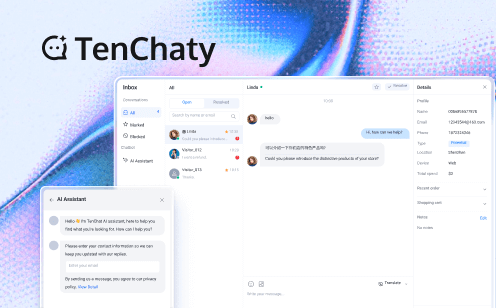 The professional audio-visual industry is on the cusp of a significant transformation, driven by rapid technological advancements. As we look towards 2025, several key trends are emerging that will reshape the industry and redefine how businesses operate and users experience AV technology.
The professional audio-visual industry is on the cusp of a significant transformation, driven by rapid technological advancements. As we look towards 2025, several key trends are emerging that will reshape the industry and redefine how businesses operate and users experience AV technology.
The Rise of the AI-Powered Experience
Artificial intelligence is no longer a futuristic concept; it's rapidly becoming an integral part of the AV landscape. By 2025, AI will be deeply embedded in various applications, from capturing and analyzing vast amounts of data to delivering highly personalized and intelligent user experiences.
Smart Spaces: AI will play a crucial role in designing intelligent spaces that adapt to the evolving ways people collaborate, learn, and shop.
Elevated Meeting Experiences: AI-powered audio processing will be essential for eliminating background noise and enhancing audio quality, significantly improving remote and hybrid meeting experiences.
The Persistence of Hybrid Work
While some organizations are eager to return to the office full-time, the hybrid work model is here to stay. This presents both challenges and opportunities for the AV industry.
Space Optimization: As hybrid work models become the norm, businesses need to optimize their real estate footprint. Monitoring and data analysis will be crucial in understanding space utilization and making informed decisions about office space.
Meeting Equity: Ensuring a seamless and equitable experience for both in-person and remote participants will be paramount. High-quality AV systems, strategically placed displays, and thoughtful room design will be essential for achieving meeting equity.
AI: Not Just for Customers
The power of AI extends beyond enhancing customer experiences; it can also be leveraged to streamline internal processes and boost efficiency within organizations.
Unlocking Internal Efficiencies: From optimizing workflows to automating contract generation, AI tools can unlock significant cost savings and efficiency gains within businesses.
Migration to the Cloud
The AV industry is increasingly embracing cloud-based solutions for remote monitoring, management, and scalability.
Simplified Management: Cloud migration simplifies the management of multiple sites, enabling businesses to operate more efficiently and scale their AV deployments with ease.
Security Concerns: While cloud monitoring solutions offer efficiency, cybersecurity remains a top concern. The industry must prioritize robust security measures to protect sensitive data and systems.
Cybersecurity Takes Center Stage
As technology advances and data becomes increasingly valuable, cybersecurity is paramount.
Industry-Wide Standards: Enterprise-level organizations are demanding adherence to recognized cybersecurity standards from AV integrators to ensure the safety and security of their data and systems.
Looking Ahead
The professional AV industry is poised for dynamic growth and innovation. By embracing these trends – from harnessing the power of AI and optimizing spaces for hybrid work to prioritizing cybersecurity and migrating to the cloud – businesses can deliver exceptional experiences, enhance efficiency, and thrive in the evolving digital landscape.
Why Choose Tencent RTC for Conversational AI?
Looking to build a powerful, no-code AI Voice Assistant? Tencent RTC is your ultimate solution! With its unmatched versatility, ease of use, and cutting-edge features, Tencent RTC makes implementing Conversational AI a breeze. Here’s why it stands out:

1. Seamless Integration with Multiple AI Services
Tencent RTC supports integration with a wide range of STT, LLM, and TTS providers, including Azure, Deepgram, OpenAI, DeepSeek, Minimax, Claude, Cartesia, Elevenlabs and more. This flexibility allows you to choose the best services for your specific use case. When the LLM provider chooses OpenAI, any LLM model that provides OpenAI-compatible API endpoints is supported here, including Claude and Google Gemini.
2. No-Code Configuration
Tencent RTC simplifies the setup process with a user-friendly interface, enabling you to Configure Conversational AI in just a few minutes. No extensive coding knowledge is required, making it accessible to everyone.
3. Real-Time Interruption Support
Users can interrupt the AI's response at any time, enhancing the fluidity and naturalness of conversations.
4. Advanced Features
AI Noise Suppression: Ensures clear audio input, even in noisy environments.
Latency Monitoring: Tracks real-time performance to optimize conversation flow, including LLM latency and TTS latency.
Switch Providers on the Fly: Without ending the conversation, you can modify the interruption duration, or switch between different LLM and TTS providers (and voice IDs) to experiment with various configurations.
5. Multi-Platform Integration
If you like, Tencent RTC also supports local development and deployment across Web, iOS, and Android platforms, providing flexibility for diverse applications
Ready to see it in action? Watch this video or follow the tutorial to start building your AI Voice Assistant today!

